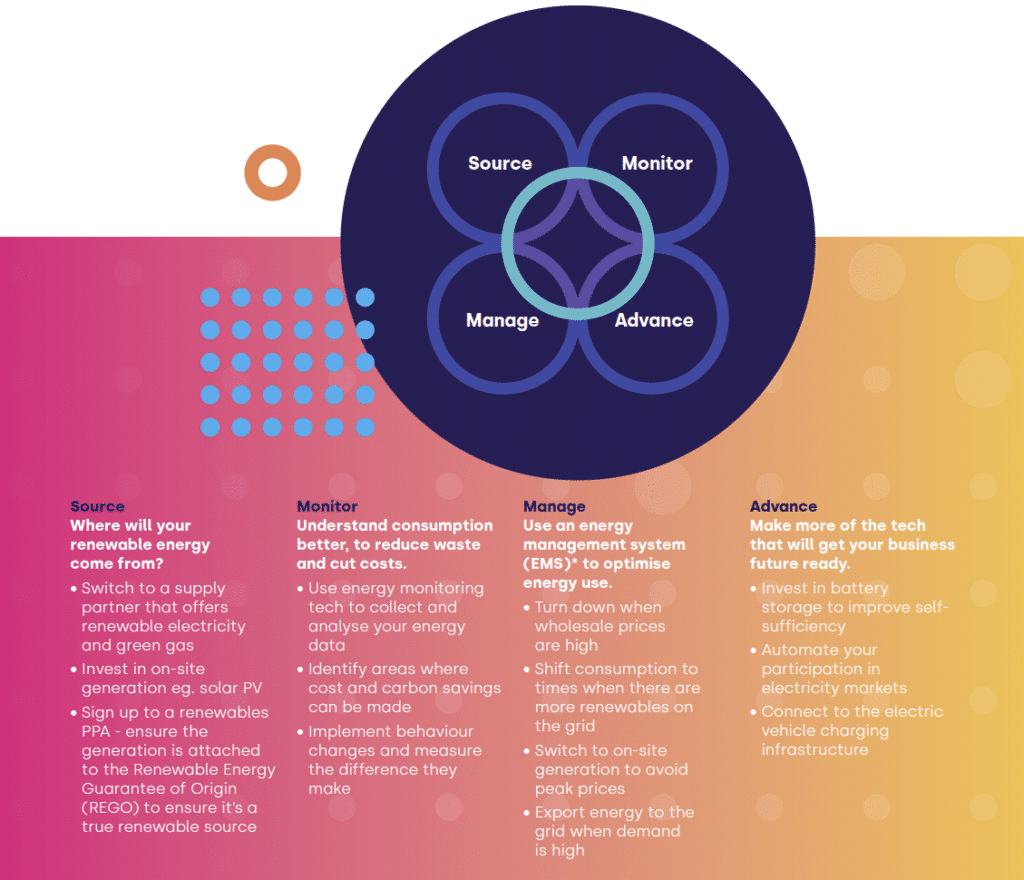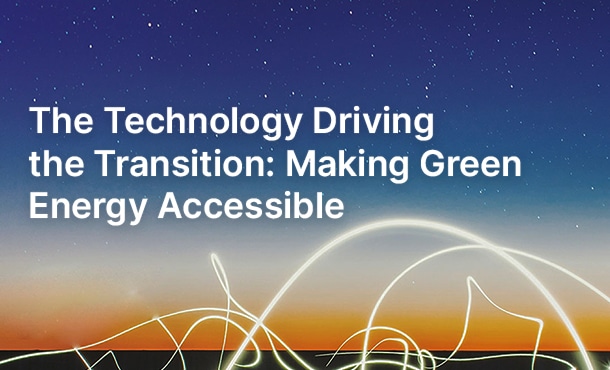Technology Driven Transition: Making Green Energy Accessible
The energy transition, both at site level and as a whole system, is underpinned by technology advancements.
The transition to low carbon energy firstly began with investment in renewable energy generation. Its future success depends not only on continued investment in renewable energy, to make it accessible and cost-effective for everyone. It also depends on developing technologies which support and connect that generation.
The World Economic Forum (WEF) reports that during the past five years, innovation in low carbon energy (LCE) technology has centred around fuel-switching and energy efficiency technologies. This includes technologies connected to batteries: hydrogen, smart grids, and carbon capture utilisation and storage (CCUS). All of these are important enablers of the energy transition. Importantly, the advent of EVs has created the greatest push for new technology. Whether for batteries, the vehicles themselves, or for the charging infrastructure.
Why is it important to know this? Businesses that have an understanding of energy marketplace trends will have a much better idea of how to prepare their own business for the future. Changes to the energy infrastructure are happening at speed. What technologies could benefit your business? And where should you be investing precious time and resources to make sure you’re ready for the changes ahead?
Business tools
For SMEs just starting out on their sustainable energy journey, it can be helpful to break down the available technologies into categories. This makes it easier to decide which options are best suited to your business. You can then link them back together and understanding how they interact.
The categories below highlight some of the sustainability measures SMEs can take. Each can of course be implemented individually, but bringing it all together is how businesses will maximise impact; to make deeper carbon cuts and reap bigger benefits. If you’re questioning which tools will work for you, or need help to scope out a project and build a business case, working with an independent partner can often be the best way to start. This will help you understand how to meet your objectives without tying you to any one technology.

A sophisticated, flexible EMS can help you make light work of energy management, by making sure all your energy using equipment is optimised on-site.
Where flexibility is possible, it can then automate interaction with the energy marketplace. All without ever compromising your operational efficiency.
Online tools and resources
Want to make a commitment? The European Commission’s “Fit for 55” legislation package provides support towards its goal to reduce net greenhouse gas emissions by at least 55% by 2030, and the UK’s SME Climate Hub is packed with useful resources.
Are SMEs missing an opportunity?
Did you know that less than 50% of SMEs in Europe make use of energy monitoring systems? Many just rely on looking at their energy bills for consumption monitoring.
Improving accessibility for all businesses
For far too long, valuable energy management tools have only been accessible or affordable for large firms, while SME businesses have sacrificed the ability to take advantage of energy market opportunity and opted instead for low risk budget certainty through fixed energy contracts. This no longer has to be the case.
Recent advances in data and energy management technology mean it’s now easier and more cost-effective for SMEs to access the opportunities that come with flexible, proactive energy management. What’s more, in-house energy expertise is no longer a requirement thanks to remote monitoring and intelligent automation capabilities. (This is covered in more depth in Section 4 of Making Sense of Sustainable Energy Choices: A Guide for SMEs).
UK leads the way in support for SMEs
Alongside this advancement in technology comes important recognition that ‘big companies and high emitters’ have been the main focus of UK policies and initiatives to date. he nation’s millions of SMEs risk being left behind during the net zero transition. Bankers for Net Zero aims to change this. The new initiative, launched in July 2021, forms part of the UK’s Finance Coalition for COP26. It calls on banks and policy makers to ensure that SMEs are supported in their sustainability efforts. This includes financial incentives to invest in decarbonisation and lower interest rates and taxes for sustainable businesses.
‘Globally, small and medium enterprises represent 99% of enterprises in the economy, around 60% of employment, and around 13% of global total final energy. The IEA has calculated that cost-effective energy efficiency measures could reduce SME energy consumption by 30% (22 exajoules) – more than the total energy consumption of France, Italy and Spain, combined, per year’.
At this time, most government sustainability incentives aimed at SMEs are distributed on a local or regional basis. Examples include the West of England Green Business Grant which supports SMEs to improve the energy efficiency of buildings and business operations, and Low Carbon Dorset. They certainly offer free technical support and grant funding for energy efficiency and renewable energy projects. Businesses can find out more by contacting their local authority, speaking to an independent expert or seeking advice from action groups like the Federation for Small Businesses (FSB).
For information on how Wattstor can help your business, get in touch with the team.
This blog is an excerpt from the recent guide “Making Sense of Sustainable Energy Choices: A Guide for SMEs”. Download below to get your copy.
Technology Driven Transition: Finally Making Green Energy Accessible

